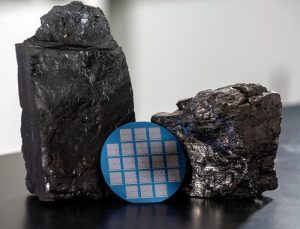Another Use for Coal
Coal, although abundant in the U.S., has a bad reputation based on its use as a fossil fuel. However, joint research from the University of Illinois Urbana-Champaign, the National Energy Technology Laboratory, Oak Ridge National Laboratory, and the Taiwan Semiconductor Manufacturing Company (TSMC) indicates that coal can play a vital role in next-generation electronic devices.
Coal can be transformed into high-purity materials just a couple of atoms thick with unique atomic structures and properties ideal for making some of the smallest electronics with superior performance.
A process developed by the NETL converts coal char into nanoscale carbon disks called “carbon dots” that can connect to form atomically thin membranes for applications in both 2-D transistors and memristors, critical to constructing advanced electronics. The small-scale materials often make the electronics operate faster and consume far less energy. The team reported its results in the journal Communications Engineering.

Researchers in the collaboration have shown that they can form these carbon layers from carbon dots derived from coal char. They developed two types of two-dimensional devices: transistor dielectric and memristor filament.
For the first (the transistor dielectric), they used coal-derived carbon layers as the gate dielectric in two-dimensional transistors built on the semimetal graphene or semiconductor molybdenum disulfide to enable more than 2x faster operating speeds with lower energy consumption.
The second device (the memristor filament) can store and operate on data to significantly enhance the implementation of AI technology.
The development of these new devices provides proof-of-principle for using coal-derived carbon layers in two-dimensional devices. Now, they must show that such devices can be manufactured on large scales.

